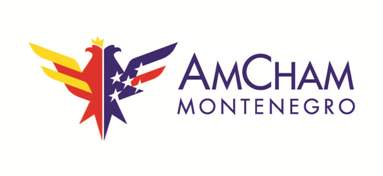
5
2019Is your organization ready for Digital Transformation journey?
Author: Saša Šćekić, member of AmCham Digital Committee
“It is not the strongest of the species that survives, nor the most intelligent that survives. It is the one that is the most adaptable to change.”
Charles Darwin
In 2014, car manufacturer Ford embarked on a road to digital transformation by announcing grand plans to become “personal mobility” business. Mark Fields, companies’ CEO at the time, established a separate organization segment called Ford Smart Mobility, responsible of developing a new digitally enabled cars with enhanced mobility. Separated from the core business and placed thousands of kilometers away from the headquarters, this segment had no cohesion with other business units. Although Ford invested a huge amount of money into Smart Mobility – this siloed organization was not able to drive digital transformation forward. Three years later, after Ford’s stock price fell by almost 40%, Fields stepped down as chief executive. Soon after, chairman Bill Ford Jr stated at the press conference that he wants to focus on how digital innovation can be applied at all levels of the company.
Digital transformation failure at Ford can be observed as an example of how important it is to have a unified approach and embrace transformative strategies in every part of the organization.
As we concluded in the first part of this article (check it out here), digital transformation is not only about IT, and no amount of technology will help if you don’t plan for people and process changes. All that an organization is made of will be affected, and this requires extensive resources and orchestration up and down the management chain.
Smaller companies tend to have leaner, more flat organization – where communication is horizontal and decision making is fast. This means less conflicts of interest and significantly less office politics to deal with. To cut it short, if you are transforming a smaller company then you will probably have much more fun with the whole endeavor. On the other side, larger companies tend to have a more hierarchical and complex organization. They are inherently slow to adopt changes – where a lot of up and down communication is needed before anything of substance can happen. Strong leadership, focused on building a collaboration culture and a continuous communication of priorities, top to bottom, can mitigate these issues and enable for important developments and organization changes to be completed somewhat faster. However, maintaining the momentum of long-term developments remains a continuous struggle – as time goes by, individual priorities shift and resources get reallocated to reach those priorities. These organizations are siloed to the bone, and the bigger they are, the harder it is to break through those silos.
Next to organizational model limitations, we should also take into consideration the amount of work that may need to be done in order to reach transformation objectives. This can be observed in 3 dimensions:
- People: new products, processes and supporting technologies will require making organizational changes, educating existing staff, re-purposing and hiring new digital talents.
- Processes: both internal and customer facing processes will need to be optimized or re-engineered to improve customer experience and reduce costs.
- Technology: digitization and re-engineering of business processes will require supporting technologies such as workflow automation and BPM; new solutions will be needed in order to deliver digital products and services via online, mobile and other digital channels; core IT solutions of the company would need to be adjusted to accommodate new technologies, etc.
Changes in each of these dimensions will need to be delivered over a prolonged time period, and while in some cases they may be managed separately, the more frequent scenario is that they will have inter-dependencies, requiring closely coordinated projects. A valid approach would be to setup a Digital Transformation Program where projects are identified and prioritized in line with the strategy. Who should be responsible to setup the program and advocate at the top management level for the allocation of budget, resources and priority for planned projects? The CEO will want to be involved, but he probably does not have the time to manage the program. The CIO may be burdened with legacy organization and conflicting priorities to maintain service levels of existing operations, keep compliance with evolving regulatory requirements, provide solutions for “traditional” products and services, etc. Similar goes for other existing C-level roles in the organization. This may be managed with adjustments in organizational responsibilities and KPIs. However, as in most cases it is not possible to immediately achieve significant organizational changes – this may just as well lead to friction and lost opportunities. Simply put, a Digital Leader is needed, and assigning this responsibility to existing roles may not be the best way to go.
Whoever is selected to lead, will face the challenging task of building a team necessary to support the Digital Transformation program. The most competent employees, with a digital mindset will be needed and these resources are scarce in a traditional organization. Allocating these resources to digital projects would mean pulling them away from their “regular” activities – and that will hardly be met with enthusiasm of mid and C-level management – especially if their KPIs do not include digital transformation metrics. Finally, new processes and technologies will require allocation of staff in charge of the support and maintenance tasks. For example, a mobile app will require resources for customer support, functional and technical testing of future app versions, infrastructure maintenance, planning and delivering improvements, etc. And, of course, somebody will need to educate employees responsible for sales, marketing and other business and supporting areas.
 So, knowing all this, let’s try to answer the question: who is going to drive?
So, knowing all this, let’s try to answer the question: who is going to drive?
Russel Reynolds’s, “Transforming Consumer Banking Structures and Talent for Digital World”, article (link) offers an interesting perspective, by defining 3 organizational approaches:
- Status quo – where digital responsibilities are allocated across the organization, they are layered independently across different functional departments. These organizations are “universally driven by conservative cultures that inherently slow down the pace of change”.
- Progressive – where a Chief Digital Officer (CDO) is appointed with the responsibility and authority to implement the Digital Strategy. He reports to the CEO or some other C-level role. Functional heads for strategy, product, customer experience and applications are housed under the CDO. There are still digital teams spread across other verticals such as business and IT. The article notes that “this approach gives digital a seat at the table and homogenizes the digital experience”.
- Futurist– where appointing the CDO as a C-level function with complete P&L authority and housing all necessary organizational units under CDO, sheds duplicative roles and ensures strong digital commitment from top to bottom. As stated in the article: “this design inherently redefines legacy organizations into a forward-leaning digital architecture that drives an agile work environment”.
While Russel Reynolds’ article focuses on banks, I believe that similar approaches can be considered for other industries.
Driven by a conservative culture, a company can allocate the digital responsibilities across the organization within various verticals, such as: business, finances, IT, etc. It can even establish a Project Management Office to govern over the digital projects executed within separate units. However, the nature of such organization will inherently slow down the change – maybe even to the point where it is not aligned with the “how fast we want to get there” part of the company’s digital strategy. This approach opens many questions related to: allocation of responsibilities and authority for digital, duplication of roles in different verticals, allocation of resources and their priorities, budget owners and their priority developments, who owns the relationship with digital vendors and external parties, and so on. Overall, it is close to impossible to ensure an efficient transformation, a uniform delivery and a consistent customer experience.
While an optimal approach should be tailored to accommodate the company specifics and its digital objectives – I believe that larger companies should appoint a Chief Digital Officer, ideally as an executive role, and build up a digital team directly reporting to the CDO. This team should be consistent of functional units covering all areas of digital – from digital business (product development, sales, marketing), over digital technology (applications and infrastructure), to operations and supporting functions (user testing, employee education, customer support, etc.). This would ensure that the CDO has the authority and resources to drive the digital transformation across the organization. And that her/his team can deliver digital projects with little to no dependency on resources in other verticals. Appointing responsibilities for operations and maintenance under CDO would also ensure that the defined customer experience standards are maintained over time – without sacrificing new developments and overall digital transformation priorities.
Finally, setting up the right organization is crucial for attracting and retaining highly competent staff, and this is imperative for success. It’s naturally engaging to work in creative teams, focused on solving issues and delivering digital innovations in an agile manner. Just as much as it is repelling to invest a huge effort only to see snail speed progress, hindered by a lack of clear direction, internal politics, organization running in different speeds (slow where fast is needed), etc. As hinted multiple times in this article – digital transformation is very much about the people. Without the right competencies it is just a lot of rooms and roles – playing around, doing something…
 As I started this article with the quote from Lewis Carroll’s Alice in Wonderland, I thought it would be only befitting to end it the same way.
As I started this article with the quote from Lewis Carroll’s Alice in Wonderland, I thought it would be only befitting to end it the same way.
“Would you tell me, please, which way I ought to go from here?”, said Alice. “That depends a good deal on where you want to get to”, said the Cat. “I don’t much care where”, said Alice. “Then it doesn’t matter which way you go”, said the Cat.
As we answer questions of where we need to go, how fast we need to get there, and who is going to drive, it is only the journey that is left. Let it be an interesting one.








